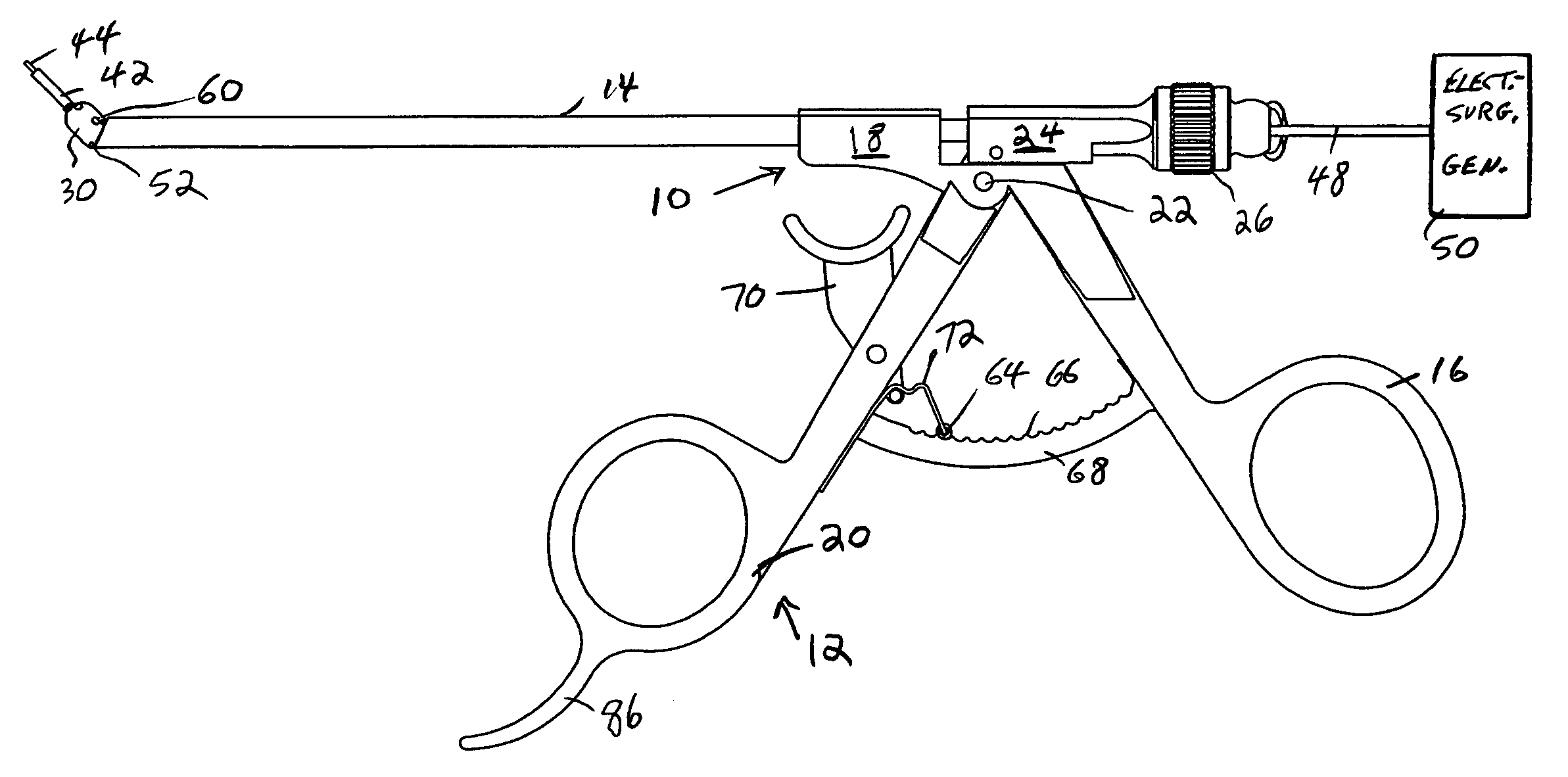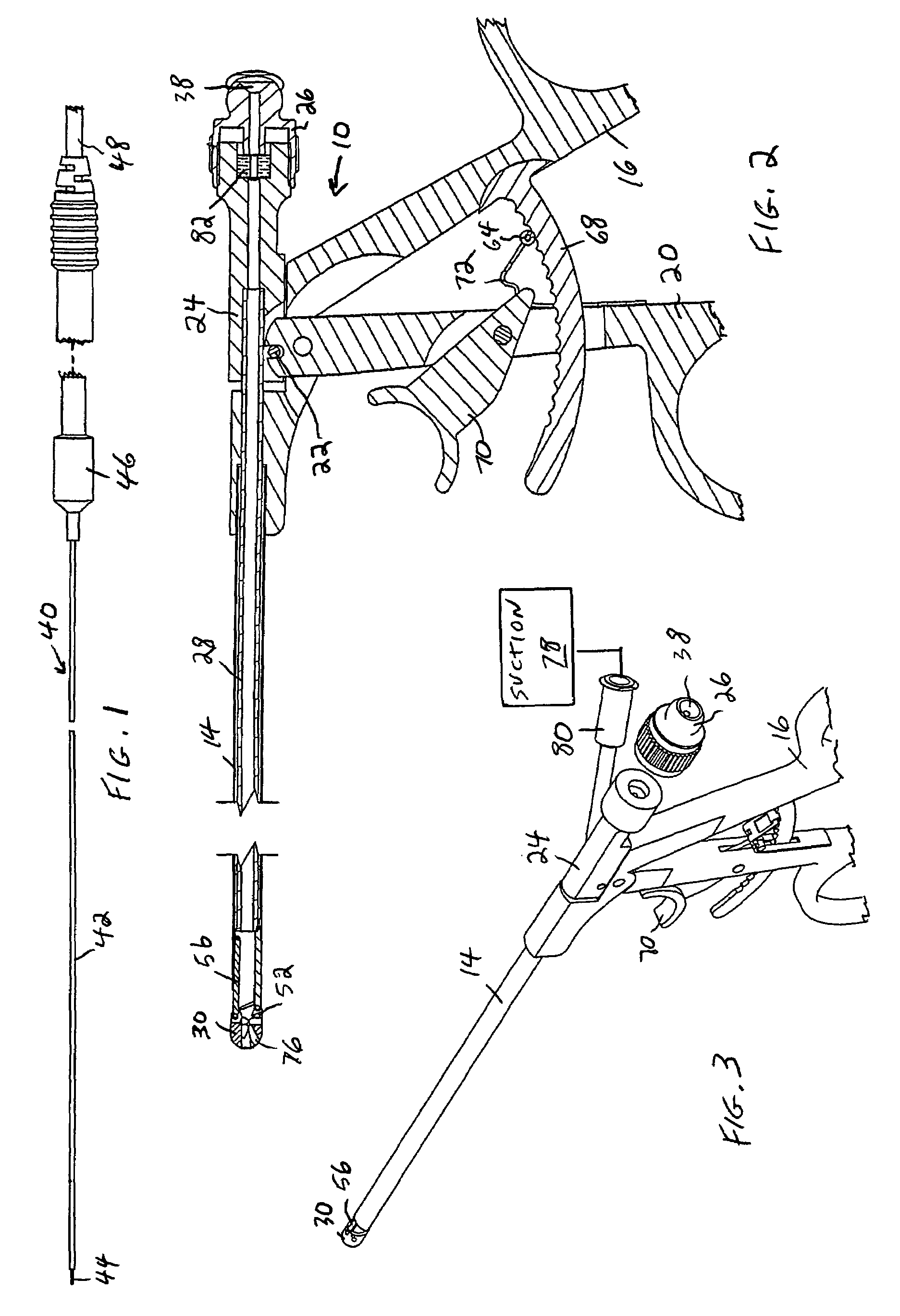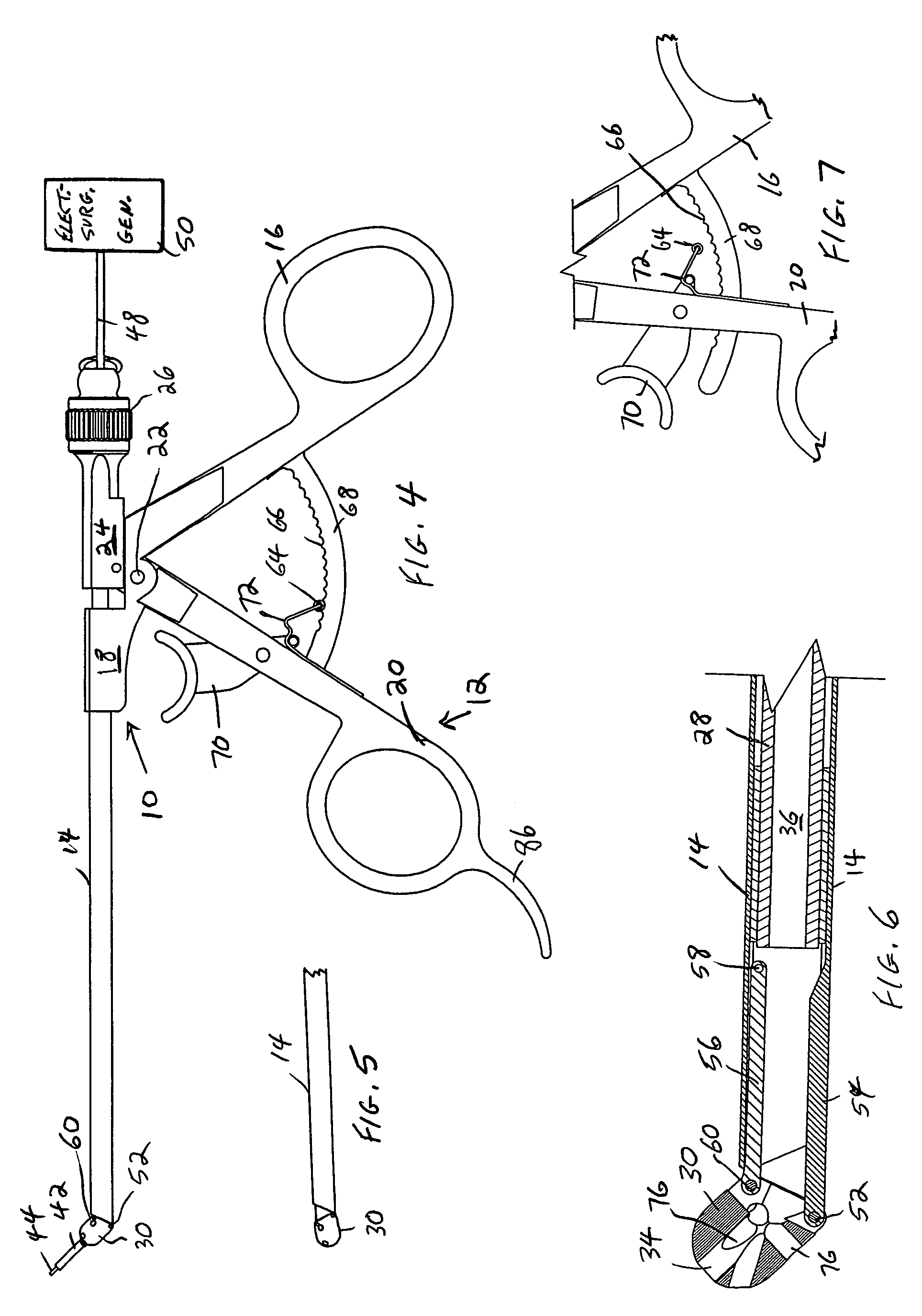[0012]In accordance with a feature of the invention, an electrosurgical probe comprises a very long, thin, flexible, insulated wire electrode, so thin and flexible that it can be used with a miniature or micro-sized
endoscope combining imaging
optics and an instrument channel with an overall
diameter below about 3 mm, hereinafter referred to as a micro-fibre. In accordance with a principal feature of the present invention, the micro-fibre electrode is removably mounted in a novel handpiece or
handle for controlling the micro-fibre electrode while also being able to manipulate and guide the micro-fibre electrode in a relatively stationary, tissue touching technique, improving surgical outcomes in procedures such as endolaryngeal
surgery. The combination of the micro-fibre electrode with the novel handpiece results in an innovative endoscopic instrument allowing precise, accurate
cutting and coagulation of laryngeal lesions, for example, when hand manipulating the micro-fibre tip and thus being able to navigate and guide the micro-fibre tip more easily to the targeted tissue. The targeted tissue can be removed, ablated, vaporized, coagulated, incised, or excised where histological examination is required. The movement range of the preferred instrument allows the micro-fibre electrode tip to be moved from a
neutral position aligned with the longitudinal axis of the handpiece in an upward direction about 45° or down about 15°, allowing access to a wide range of targeted lesions in a wide range of locations on a patient's
anatomy.
[0013]The micro-fibre electrode handpiece that serves as the
manipulator device offers many significant clinical and technical advantages with video endoscopic assisted instrumentations. The advantages include safety, tactile feedback, wide range of
accessibility, bloodless field, precise and accurate removal of targeted tissue, much less scarring, faster, high quality healing, excellent tactile feedback, and less pain and swelling. Pressureless cuts minimize the risk of injury to laryngeal structures. Economically it combines a shorter
operating time with a cost effective unit and instrument. A further
advantage is the ability to excise tissue for histologic evaluation if desired.
[0015]The micro-fiber electrode used in the invention is simple to construct, and uses a minimal amount of precious material. It therefore provides a safe, sterile, surgical, disposable
single patient use tool available for each patient in a cost effective manner. The
manipulator of the invention in which it is used, while relatively less expensive to construct than re-useable surgical tools, has the big
advantage that the re-
usable manipulator is only the navigating guide and holder for the disposable RF micro-fiber electrode which actually contacts the tissue surgically. Thus sterilization of the manipulator is much less of a problem for the surgeon and hospital and contributes to patient safety.
[0016]In a preferred embodiment, the handpiece is constructed such that, not only can the working end be deflected after
insertion in the patient, but also the deflected position can be clamped by the surgeon, with its position easily changed by the surgeon with a finger of the same hand upon releasing the clamp whenever desired. The length that the fibre extends from the end of the deflector can also be easily controlled in the handpiece of the invention.
[0019]In still another preferred embodiment, the manipulator is configured to provide a channel for suctioning off separated tissue or plume or other fluids created at the
surgical site. The reduced plume / fluids at the site improves
visibility for the surgeon.
[0022]The construction of the invention will provide important benefits for all MIS arthroscopic or endoscopic procedures and in many cases enables the efficient delivery of radiofrequency (RF)
energy technology for controlled precise tissue
cutting, absorption and other tissue effects and in a safe manner. It is cost effective and considerably less expensive than other surgical modalities such as lasers where the novel electrode configuration may be of importance, as well as for general electrosurgical procedures where the volumetric reduction of tissue or
ablation of tissue that is hard to reach with the known electrodes is desirable. Examples of particular procedures for which the electrosurgical electrode of the invention is particularly suitable is spinal disc reduction and endonasal procedures.
 Login to View More
Login to View More  Login to View More
Login to View More 


